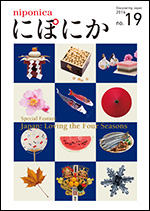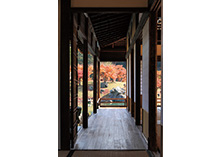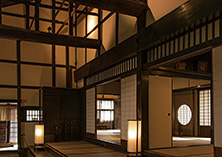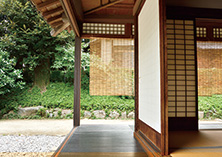niponica is a web magazine that introduces modern Japan to people all over the world.
2016 No.19
Japan: Loving the Four Seasons

Advanced Energy-Efficient Home Dressed for the Season
—LCCM house incorporates the insights of traditional Japanese architecture—
From construction to occupancy to demolition, LCCM (Life Cycle Carbon Minus) houses result in negative lifecycle CO2 emissions. To this end, a Demonstration House is built with a traditional Japanese architecture approach to simulate LCCM living.
Photos by Kusu Seiko, amanaimages Inc., PIXTA
Collaboration: Building Research Institute, Japan and Koizumi Atelier
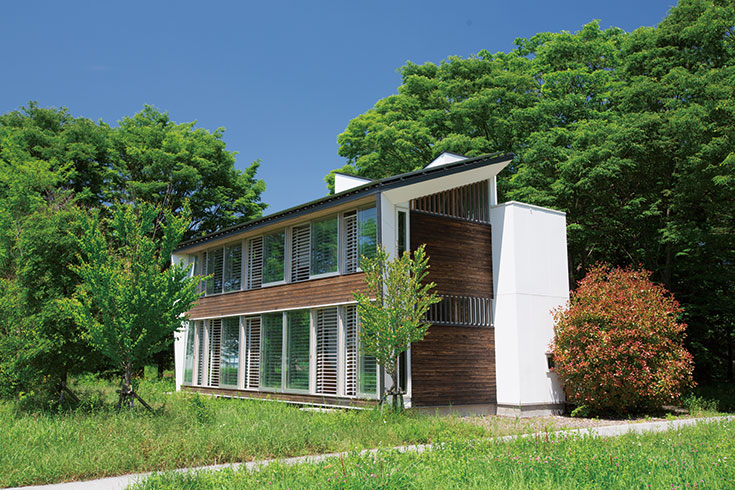
LCCM Demonstration House, BRI; Tsukuba, Ibaraki Prefecture. (Photos: Kusu Seiko)
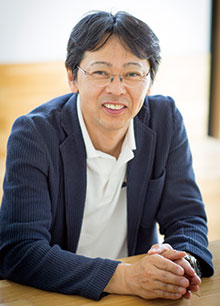
Chief Research Engineer Kuwasawa Yasuo, BRI, is responsible for design and calculations of energy saving for LCCM Demonstration House. “Our calculations show the house will achieve negative lifecycle CO2 emission balance within 30 years.”
Today’s crucial issues for building homes in Japan and elsewhere include reducing energy consumption and CO2 emissions. The LCCM Demonstration House, an experimental house constructed in Tsukuba City, Ibaraki Prefecture, has advances like solar generation and storage batteries to generate, save, and reduce energy.
Yet there’s more to the house than its considerable equipment. The structure purposefully utilizes human agency, presenting a lifestyle wherein house interiors are skillfully configured in harmony with nature. Movable elements like sliding doors and louvered partitions all save energy.
“Occupants create a comfortable indoor environment by opening and closing interior elements to suit season and weather. This is like the house changing clothes in response to the changing seasons, using insights from the traditional Japanese way of life,” says Chief Research Engineer Kuwasawa Yasuo, Building Research Institute (BRI), who participated in the building design.
Traditional Japanese homes often feature engawa, long verandas linking interior and exterior. Between support pillars are large openings called mado that draw pleasant breezes into the rooms and provide an enjoyable view to those within. Meanwhile, opening and closing shoji sliding doors and rain shutters manages the inflow of rain and sunlight. Thus we see Japanese people actively adapting to the four seasons.
The LCCM Demonstration House uses exactly the same approach in the way it “changes clothes” in sync with the seasons and incorporates sunlight and air into the lives of its occupants. This is a truly energy-efficient Japanese house.
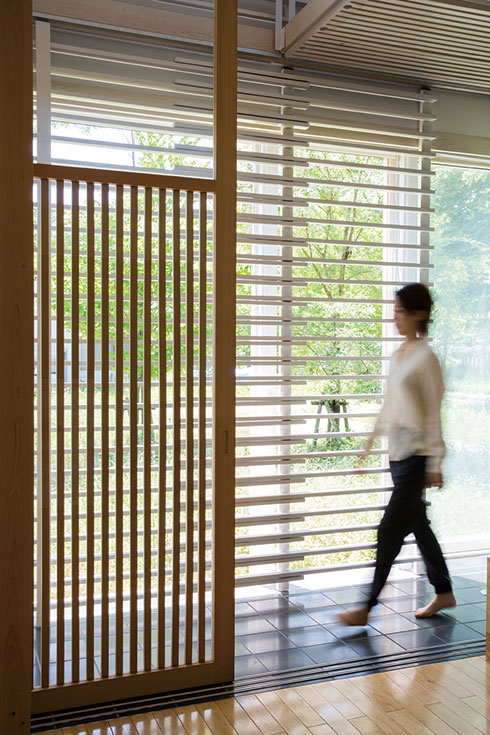
Movable elements like lattice partitions and window treatments feature in LCCM living. (Photos: Kusu Seiko)
Traditional Japanese Home: Integrating Outer and Inner
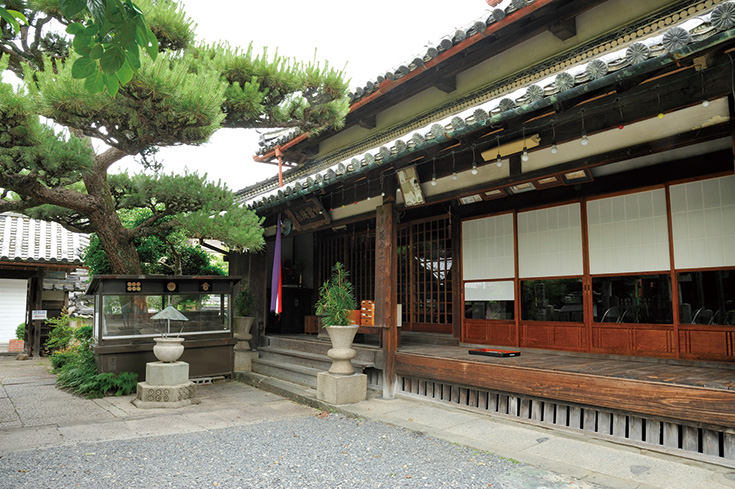
Photo: amanaimages Inc.
![]() Layers of Clothing
Layers of Clothing
Indoor environment is modified to match the season by changing such clothing layers as rain shutters (to guard against rain and wind), shoji sliding doors, and sliding partitions (fusuma). (Photo: PIXTA)
![]() Partitioned Living
Partitioned Living
The space can be divided as needed by moving shoji doors and sliding partitions (fusuma). (Photo: PIXTA)

